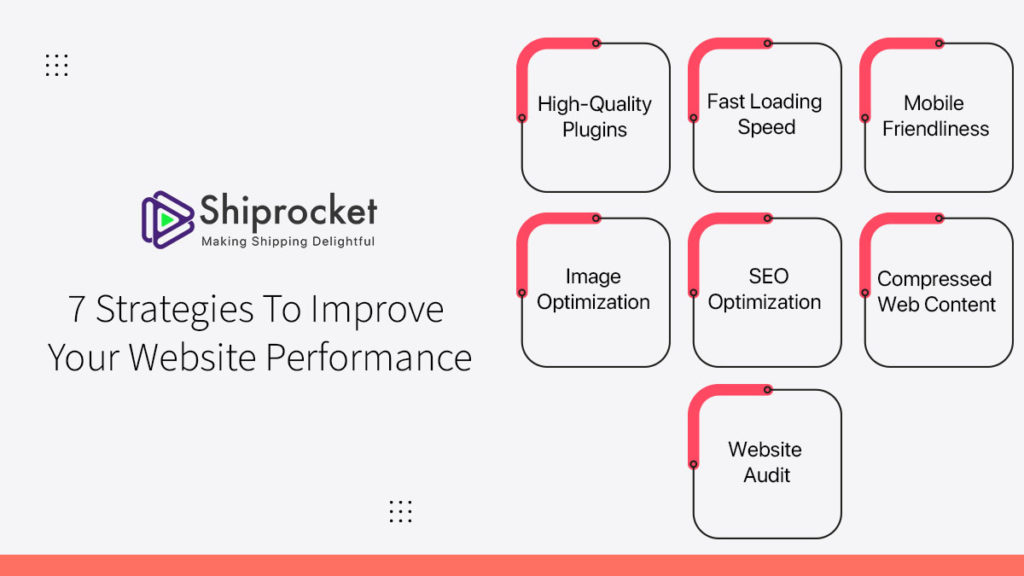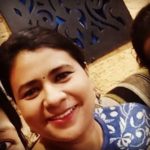Top 7 Strategies To Optimize Your eCommerce Website Performance
It is always in favor of your business growth if your website design is appealing and has flawless functionality. To take advantage of everything an online store has to offer, you need to invest in optimizing your website’s performance. However, website performance optimization covers so many different facets of online performance: page responsiveness, page speed, page navigation, development, and SEO, which are just a few of the niche components website performance optimization touches.

A few seconds lag in page loading time may give you:
- 7% traffic drop on the website
- 11% drop in page views
- 16% decrease in customer satisfaction rate
- 74% of users will leave a website if it’s not mobile-friendly
Hence, it’s crucial to make website performance a priority because poor performance may result in poor customer experiences.
How to Improve Your Website’s Performance?

Adding High-Quality Plugins
Website performance optimization is crucial for building traffic and to convert on your sales targets. Adding high-quality plugins are the best website optimization tools you can start using today. The plugins improve the website functionality that can have tremendous benefits for your business. But using too many plugins on a website are often unnecessary features.
Select only high-quality plugins, and avoid adding plugins with complex content scripts, operations, and assets. Although there is no such number for adding plugins to a website, adding up to 10 plugins is a better option than installing one plugin to perform complex tasks.
Website Speed
These days, businesses have become used to fast loading sites. They expect a website to be fast because when a page takes longer to load, it directly affects the customer experience and conversion rate. According to Google researchers, website owners have only 5 seconds to engage users before they think about abandoning the site.
The page load time of 100 milliseconds is acceptable on Google’s SERP performance. If your website load speed is greater than 10 seconds, the visitors will start experiencing frustration, and chances are they will leave your website and won’t revisit your website in the future.
In other words, web visitors will not spend excessive time on slower websites. The losers in this slower site game are e-Commerce businesses that fail to give their customers a fast enough website and lose them forever.
Mobile Responsiveness
The purpose of website performance optimization is to improve your site’s loading time. Every business that wants to win in the competitive market has a website with the power of mobile-responsiveness. Did you know that eCommerce mobile sales statistics show that sales are projected to reach $2.91 trillion in 2020.
According to the latest report, nearly seven out of ten internet users say they would look for customer reviews on their mobile phones while in-store before buying in a physical store.
For this reason, many eCommerce businesses are making their websites mobile-friendly. If your website isn’t optimized for mobile responsiveness, users will not prefer to visit your website and refer to their friends. They’ll probably start looking for other websites with a mobile-friendly website design. If you want to check whether your site is mobile-friendly, you can use the link Google Search Console.
Image Optimization
Image optimization is one of the best ways to improve the performance of a website. If you add quality images to a web page, it helps tell your audience stories and increase conversions. It would be difficult to build a useful eCommerce website without images.
Choosing the right file format helps in improving the quality of images. You can select PNG, JPEG, and GIF file formats to produce high-quality images. Similarly, image compression is also a method commonly used to improve image quality. It is generally best to keep a webpage’s total size under 1 or 2 MB. Images make up around 66% of an entire web page’s weight.
There are a lot of tools available for use to optimize your web page’s images. The best tools and programs to use for image optimization are Affinity Photo, ImageOptim, Jpeg Optimizer, Adobe Photoshop, Gimp, GIFsicle, OptiPNG, FileOptimizer, Trimage, Paint.NET.
However, using images requires a balance between the size of your pictures and website performance. The purpose of imagery on a website should be to enhance your content and improve the user experience. If images are negatively impacting the performance of your website, they begin to do the opposite. According to HTTP Archive, One way to improve your site’s performance is to optimize your images.
SEO Optimization
SEO strategy is crucial for a site’s success. It’ll ensure your website works exactly as per the search engine guidelines, attracting more traffic and getting more opportunities to convert potential customers. Analyze the website data to check how people are finding your website. Look for web pages that get more traffic and more conversions. Tools like Google Analytics and Google Search Console helps you get a clear picture of user behavior reports, bounce rate, number of sessions, and more.
Choosing the right SEO keywords can help your website rank better in Google rankings. Tools like Ahrefs and SEMrush help you find keywords related to your business and niche. Use these tools to find long-tail keywords that fit with your user intent. Before you decide on the keywords, don’t forget to create value-rich content. The length of the content isn’t everything. Providing unique information is essential to rank higher.
On-page SEO is an essential factor in optimizing your website’s performance when building a business website. Work on web page headlines, subheadlines, URL slugs, and meta tags. Similarly, for off-page optimization, use guest blogging, social media activity, influencer marketing, and brand mentions to improve your site’s performance.
Compress Your Web Content
Bringing in new visitors to your website requires little effort. Good search engine optimization and marketing usually works. The ultimate factor in attracting new visitors is the fast loading times. Having uncompressed content on your website can also cause your users to experience lengthy page load times. To help solve this issue, here’s what Google recommends:
- Minify JavaScript, HTML and CSS
- Maintain consistency in CSS and HTML code with consistent casing in lowercase, quoting of HTML tag attributes in the same order, and specify CSS key values in order.
Audit Your Website
Underperforming sites make a visitor immediately assume that the company is incompetent in delivering a great website and so the user experience, resulting in a drop in conversion rate.
High-performing websites have three substantial aspects that control the conversion rate and user engagement. Web pages designed as per user mental states and load in 2.4 seconds have a 1.9% conversion rate.
Online eCommerce businesses that provide an exceptional user experience can gain visitors’ trust and become big brands in the cyber world.
Another essential step of improving your website’s performance is to run some website audits to see what aspects of your site need improvement. Here are some tools to audit the performance of a website.
Lighthouse: a free and open-source tool that will give you a detailed report about what needs improvement. You’ll also see actionable steps on how to optimize those areas.
Google PageSpeed: a comprehensive tool for a website audit. It will give your site a ranking out of 100, along with suggestions on how to improve its performance.
Key Takeaways
Now that we’ve covered how to improve your website performance, what happens next? Knowing the basics will give you a running start, so begin by implementing these points. Build your eCommerce website for your audience, but make sure it’s better than your competitors’.
Page speed and loading times are the most critical factors of website performance. After all, you want your visitors to access your content with easy navigation. Use these tips outlined above to improve your website’s performance and increase traffic and conversions.






